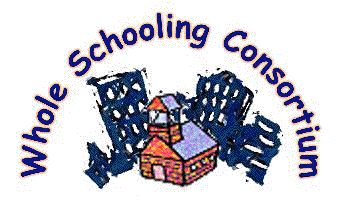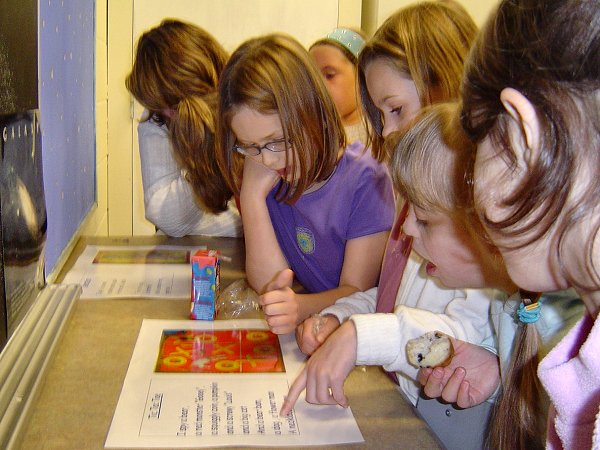

TEACH USING AUTHENTIC MULTI-LEVEL INSTRUCTION
For schooling to work, for children to learn, instruction cannot be monolithic and traditional one size fits all. Rather, we expect students to function at a range of ability levels, each being supported and encouraged to move to their next level of competence, yet without ability grouping or segregation. In such schools teachers design instruction for diverse learners that engages them in active learning in meaningful, real-world activities at multiple levels of ability, providing scaffolds and adaptations as needed. Links. Publications.
 AUTHENTIC, MULTI-LEVEL LEARNING:
AUTHENTIC, MULTI-LEVEL LEARNING:
Creating high levels of learning for all students together.
Much instruction in schools, particularly those that serve low income students is un-engaging, rote, unauthentic with little recognition of or place for differences in abilities and learning styles. Haberman (1998, p. 6-7) described what he called the “pedagogy of poverty” used in too many urban classrooms with low income children and contrasted this with “good teaching”, strategies that included involvement “with issues they regard as vital concerns, . . . involved with explanations of human differences, . . . helped to see major concepts, big ideas, and general principles and are not merely engaged in the pursuit of isolated facts, . . . applying ideals such as fairness, equity, or justice to their world, . . . actively involved in heterogeneous groups, . . . involved in redoing, polishing, or perfecting their work, involved in reflecting on their own lives and how they have come to believe and feel as they do”. These themes reflect the broader summary by Zemelman, Daniels & Hyde (1998) in their cross-dicipline analysis of best practice standards for teaching and learning of the major national professional educational organizations. These recommendations called for less rote learning, memorization of skills, lecture, and more active involvement in authentic learning projects in heterogeneous groups in which democratic leadership was both promoted and explicitly taught. Relatedly, the President’s Commission on Excellence in Special Education found that “while recent research has begun to determine critical factors in instruction, more high-quality research is needed on instructional variables that improve achievement by students with disabilities” (2000, p. 54).
Further, in virtually every classroom, there is a broad range of abilities and learning styles among the students, ranging from a minimum of three grade levels to as many as seven to eight in school serving different socio-economic groups. Yet, instruction in the pedagogy of poverty so well described by Haberman typically insists that all students be at ‘grade level’, thus ignoring the needs of a substantial number of students functioning both below and above that level. Instruction that is multi-level, allowing all students, from those with severe mental retardation to students who are highly gifted to be challenged at their own level of ability provided proper supports and scaffolds and attention to their individualized learning styles.
Students with labels ranging from highly gifted to severely cognitively impaired bring a very wide range of abilities to classrooms. While traditional practice has promoted segregating and sorting students by presumed ability levels, the literature is clear that heterogeneous grouping within and across classes promotes higher levels of learning for all involved. For inclusive classrooms to function effectively, however, teachers must shift from monolithic, one level instruction to instruction intentionally designed for students with differing ability levels to learn together well. A growing literature is developing regarding such authentic, multi-level and differentiated instruction that documents such instructional strategies (Armstrong, 1994; Peterson, Tamor, Feen and Silagy, 2002; Tomlinson, 1999).
Schools are
typically structured along grade levels and teach using standardized
materials as if all children in a particular
grade were
at the same level.
The reality, however, is that any class, whether attempting to
be inclusive or not,
contains children functioning at 3-6 grade levels apart.
Inclusive schools, and the teachers and staff within them, embrace
this diversity of ability and make it part of the design of instruction.
Rather
than designing
instruction around a narrow span of abilities, inclusive teachers
design their teaching intentionally allowing for students to be
at multiple
levels of ability.
The idea, however, is not to ‘make it easier for those kids who aren’t
at grade level’.
Rather, effective teachers . . .
Schools in which teachers teach in this way have few children whose needs are not met. However, since staff are constantly learning, never getting it quite right all the time, there will often be children for whom teaching is not working. Staff then figure a range of adaptations to the curriculum, paying attention to what works and how this might be incorporated next time into an overall teaching strategy.
Michael Peterson, 2005
Armstrong, T. (1994). Multiple intelligences in the classroom. Alexandria, Virginia: Association for Supervision and Curriculum Development.
Chase, P. & Doan, J. (1994). Full circle: A new look at multiage education. Portsmouth, New Hampshire: Heineman.
Cole, R. (Ed.). (1995). Educating everybodyís children: Diverse teaching strategies for diverse learners. Alexandria, Virginia: Association for Supervision and Curriculum Development.
Daniels, H. & Bizar, M. (1998). Methods that matter: Six structures for best practice classrooms. York, Maine: Stenhouse Publishers.
Deschenes, C., Ebeling, D., & Sprague, J. (1994). Adapting curriculum and instruction in inclusive classrooms: A teacher's desk reference. Bloomington, Indiana: Institute for the Study of Developmental Disabilities, Indiana University.
Faltis, C. (1997). Joinfostering: Adapting teaching for the multilingual classroom. Columbus, Ohio: Merrill.
Giangreco, M., Cloninger, C., and Iverson, V. (1993). Choosing options and accommodations for children: A guide to planning inclusive education. Baltimore, Maryland: Paul H. Brookes.
Hindley, J. (1996). In the company of children. York, Maine: Stenhouse Publishers.
Johnson, D. & Johnson, R. (1994). The new circles of learning: Cooperation in the classroom and school. Alexandria, Virginia: Association for Supervision and Curriculum Development (ASCD).
Orkwis, R. & McLane, K. (Fall, 1998). A curriculum every student can use: Design principles for student access. Reston, Virginia: Council for Exceptional Children.
Pugach, M.C. & Warger, C.L. (Eds.) (1996). Curriculum trends, special education, and reform: Refocusing the conversation. New York: Teacher's College Press.
Tomlinson, C. (1999). The differentiated classroom: Responding to the needs of all learners. Alexandria, Virginia: Association for Supervision and Curriculum Development.
Zemelman, S.,
Daniels, H., & Hyde, A. (1998). Best practice: New standards for teaching
and
learning in America's schools. Portsmouth, New Hampshire: Heinemann.